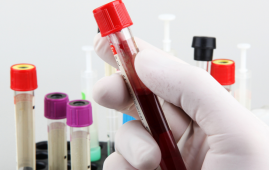

In a recent study published in the journal Cellular & Molecular Immunology, scientists from University College London reviewed current progress in developing a pan-coronavirus vaccine as well as the challenges involved in limiting the transmission of Middle East respiratory syndrome coronavirus (MERS-CoV), severe acute respiratory syndrome coronavirus 2 (SARS-CoV-2), and four other human coronaviruses.
Background
Despite the fact that the coronavirus disease 2019 (COVID-19) pandemic has been one of the most serious global public health crises in recent decades, global efforts to develop effective vaccines have highlighted the importance of understanding the immunological basis of developing resistance to respiratory viruses.
While the pandemic’s global morbidity and fatality rates have been startling, the COVID-19 vaccines have greatly slowed virus spread and avoided a considerable number of deaths.
Because coronaviruses have caused three major pandemics in the last twenty years, developing a pan-coronavirus is critical.
Pan-coronavirus vaccine
Current vaccines against SARS-CoV-2 and other coronaviruses, which largely consist of the antigenically variant spike glycoprotein, are species and even variant specific, eliciting minimal cross-reactive immune responses against other coronavirus variants or viral species.
A pan-coronavirus approach seeks to create a vaccine that protects against infections or severe disease caused by any coronavirus family virus.
The four seasonal human coronaviruses (HCoVs) OC43, 229E, NL63, HKU1, MERS-CoV, and SARS-CoV-2 account for a sizable share of the global economic health burden.
COVID-19 continues to pose long-term health challenges as a result of protracted coronavirus disease (long COVID), which affects many organ systems and causes persistent fatigue, myalgia, dyspnea, and neurological deficits, all of which have a negative influence on the individual’s life.
Many of these coronaviruses also have animal reservoirs, posing the ongoing threat of virulent versions emerging.
The Omicron variant of SARS-CoV-2, which contains novel mutations that help it evade existing vaccine-induced immunity, has also highlighted the need for a pan-coronavirus vaccine, which avoids the need for updated vaccines that can only combat each emergent variant, lowering development costs and providing broad-scale protection against coronaviruses.
Current vaccine challenges
The review addressed a full list of the present SARS-CoV-2 vaccine limitations that must be tackled throughout the development of pan-coronavirus vaccines. Limitations in blocking asymptomatic infections that continue to cause viral transmission, insufficient mounting of immune responses in non-seroconverters such as those with inborn immunological errors, lack of immune response durability, lack of mucosal administrative routes that can increase vaccine uptake in the population, and the limited cross-reactive immunity of existing vaccines are some of these challenges.
The review addressed a full list of the present SARS-CoV-2 vaccine limitations that must be tackled throughout the development of pan-coronavirus vaccines. Limitations in blocking asymptomatic infections that continue to cause viral transmission, insufficient mounting of immune responses in non-seroconverters such as those with inborn immunological errors, lack of immune response durability, lack of mucosal administrative routes that can increase vaccine uptake in the population, and the limited cross-reactive immunity of existing vaccines are some of these challenges.
Approaches to developing pan-coronavirus vaccines
Furthermore, the researchers went over certain pan-coronavirus vaccination methods that are either in the preclinical stages or are being studied clinically.
Numerous vaccines under preclinical development use ferritin or mosaic nanoparticles for vaccine administration and target either the receptor binding domain or the spike protein region of -coronavirus or sarbecovirus.
Another strategy is to use vaccine antigens that are either a consensus sequence or a string of conserved B and T-cell epitopes.
A ferritin nanoparticle platform, an enclosed vaccine containing a virus-like particle, a self-amplifying mRNA vaccine, and a live-attenuated vaccine against parainfluenza viruses are among the broadly reactive vaccines currently in clinical trials.
Conclusion
Overall, the researchers offered a comprehensive summary of the current state of pan-coronavirus vaccine development.
They also reviewed many of the drawbacks of currently available coronavirus vaccines that must be addressed in the aim of producing a pan-coronavirus vaccine capable of providing broad protection against a diverse spectrum of human coronaviruses.
For more information: Cankat, S., U, D. M., & Swadling, L. (2023). In search of a pan-coronavirus vaccine: next-generation vaccine design and immune mechanisms. Cellular & Molecular Immunology. doi:https://doi.org/10.1038/s41423023011168.
more recommended stories
 Machine Learning Predicts Early Mortality in IBD Patients
Machine Learning Predicts Early Mortality in IBD PatientsA groundbreaking study published in the.
 BRP Peptide for Weight Loss: A Natural Alternative to Ozempic?
BRP Peptide for Weight Loss: A Natural Alternative to Ozempic?The rising obesity epidemic has fueled.
 Father’s Diet & BMI Don’t Affect Newborn’s Birth Weight
Father’s Diet & BMI Don’t Affect Newborn’s Birth WeightA recent study published in Nutrients.
 Heart, Lung, & Brain Risks Persist in COVID-19 Survivors
Heart, Lung, & Brain Risks Persist in COVID-19 SurvivorsA French nationwide study reveals that.
 How Fast Are Your Organs Aging? Simple Blood Test May Tell
How Fast Are Your Organs Aging? Simple Blood Test May TellNew research from University College London.
 Continuous Glucose Monitors May Mislead Healthy Users
Continuous Glucose Monitors May Mislead Healthy UsersCGMs and Their Expanding Use Originally.
 How COVID-19 and Vaccines Differ in Heart Inflammation
How COVID-19 and Vaccines Differ in Heart InflammationA team of international researchers led.
 Can Your Genetics Influence Your Income and Health?
Can Your Genetics Influence Your Income and Health?A New Perspective on Health and.
 Air Pollution Hurts Brain Health in Just 4 Hours
Air Pollution Hurts Brain Health in Just 4 HoursAir Pollution Blurs the Mind, Impairs.
 AI Uncovers Hidden Pregnancy Risks for Stillbirth
AI Uncovers Hidden Pregnancy Risks for StillbirthA groundbreaking AI-driven study has identified.

Leave a Comment